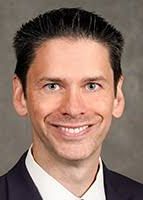Article
New Algorithm Helps Predict Likelihood of Acute Kidney Injuries
Author(s):
Less than 1% of nearly 500,000 hospitalized patients required kidney replacement therapy.
Investigators believe there is a mathematical way to forecast whether patients are at a high risk of developing an acute kidney injury (AKI).
Matthew M. Churpek, MD, MPH, PhD

A team, led by Matthew M. Churpek, MD, MPH, PhD, Department of Medicine, University of Wisconsin, internally and externally validated a machine learning risk score to detect acute kidney injuries in hospitalized patients.
Acute Kidney injuries are often linked to increased morbidity and mortality in hospitalized patients. Currently, there are very few and limited prediction models helping clinicians identify patients at a high risk of developing an acute kidney injury.
In the diagnostic study, the investigators examined 495,971 adult hospital admissions between 3 university hospitals in Illinois. The researchers used data from patients with serum creatinine (SCr) measurements from Loyola University Medical Center (LUMC) from 2007-2017 (n = 200,613), University of Chicago (UC) from 2008-2016 (n = 48,463), and at NorthShore University Health System (NUS) from 2006-2016 (n = 246,895).
The mean age of the study population was 63 years old.
The investigators excluded patients with a SCr concentration at admission greater than 3.0 mg/dl, with a prior diagnostic code for chronic kidney disease stage 4 or higher or patients who received kidney replacement therapy within 48 hours of admission.
The team also used a simplified version of a previously published gradient boosted machine AKI prediction algorithm that was validated internally among patients at the University of Chicago and externally among patients at the remaining 2 hospitals.
The investigators sought main outcomes and measures of the Prediction of Kidney Disease Improving Global Outcomes SCr-defined stage 2 AKI within a 48-hour interval. They also assessed discrimination by the area under the receiver operating characteristic curve (AUC).
Overall, the development of at least stage 2 acute kidney injuries occurred in 15,664 patients (3.4%) in the UC cohort, 5711 patients (2.8%) in the LUMC cohort, and 3499 patients (1.4%) in the NUS cohort.
In the University of Chicago arm of the study, 332 patients (0.7%) required kidney replacement therapy, while 672 patients (0.3%) in the Loyola group and 440 patients (0.2%) in the NorthShore group required kidney replacement therapy.
The AUCs for predicting at least stage 2 acute kidney injuries in the next 48 hours were 0.86 (95% CI, 0.86-0.86) in the UC cohort, 0.85 (95% CI, 0.84-0.85) in the LUMC cohort, and 0.86 (95% CI, 0.86-0.86) in the NUS cohort.
The area under the curve for receipt of kidney replacement therapy within 48 hours was 0.96 (95% CI, 0.96-0.96) in the UC cohort, 0.95 (95% CI, 0.94-0.95) in the LUMC cohort, and 0.95 (95% CI, 0.94-0.95) in the NUS cohort.
In a time-to-event analysis, the investigators found a probability cutoff of at least 0,057 predicted the onset of a stage 2 AKI a median (IQR) of 27 hours prior to the eventual doubling in SCr concentrations in the University of Chicago cohort, 34.5 hours in the NUS cohort, and 39 hours in the LUMC cohort.
“In this study, the machine learning algorithm demonstrated excellent discrimination in both internal and external validation, supporting its generalizability and potential as a clinical decision support tool to improve AKI detection and outcomes,” the authors wrote.
The study, “Internal and External Validation of a Machine Learning Risk Score for Acute Kidney Injury,” was published online in JAMA Network Open.





